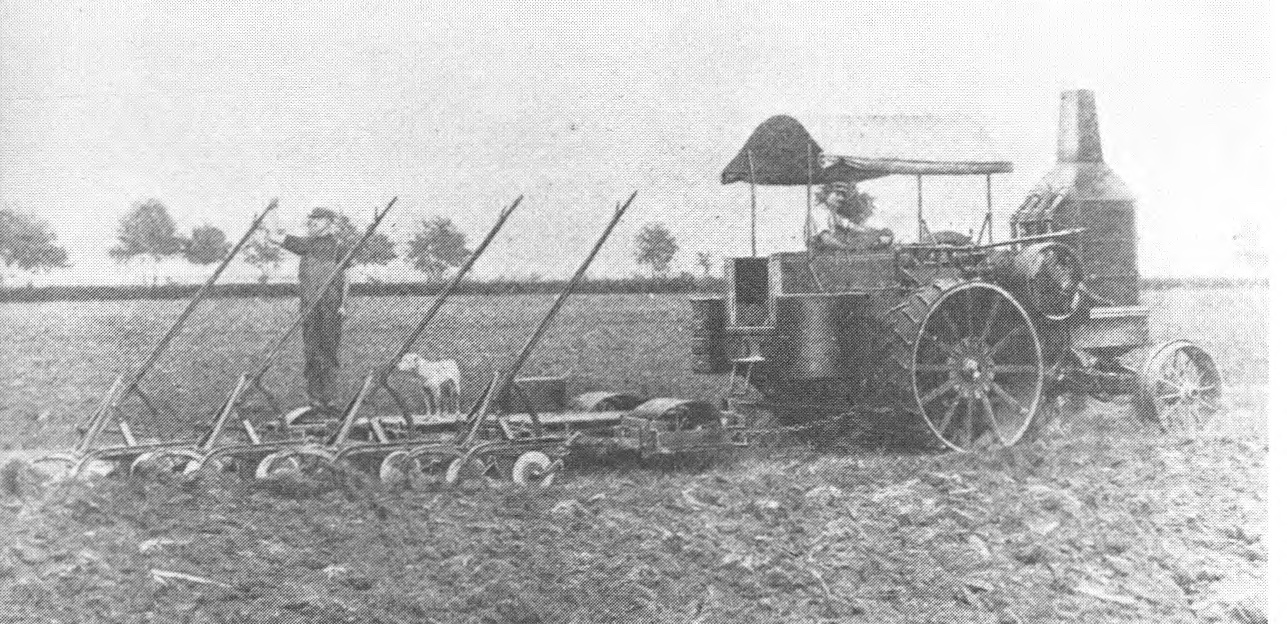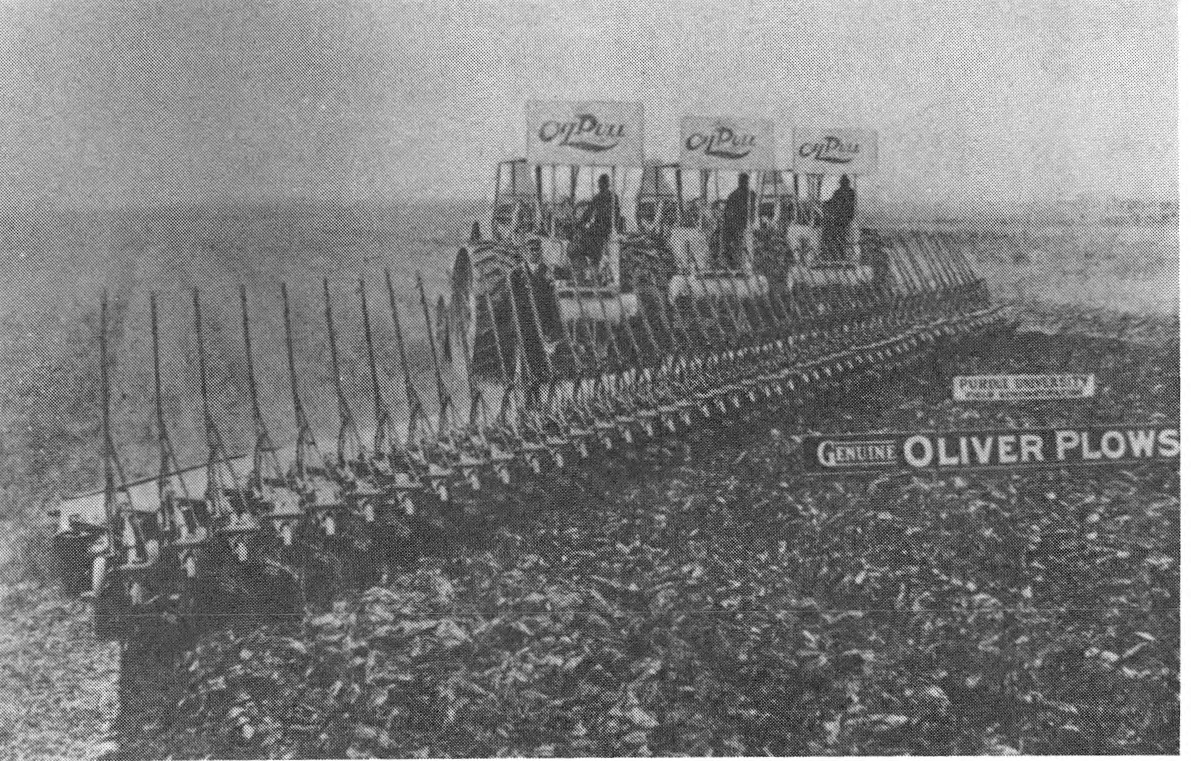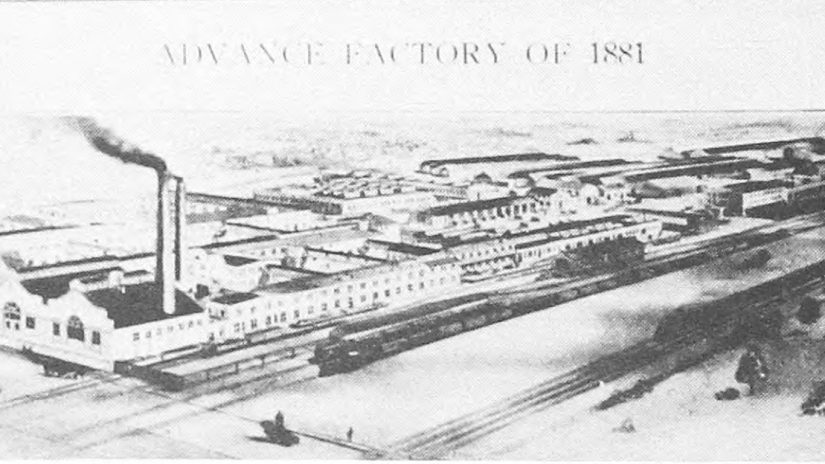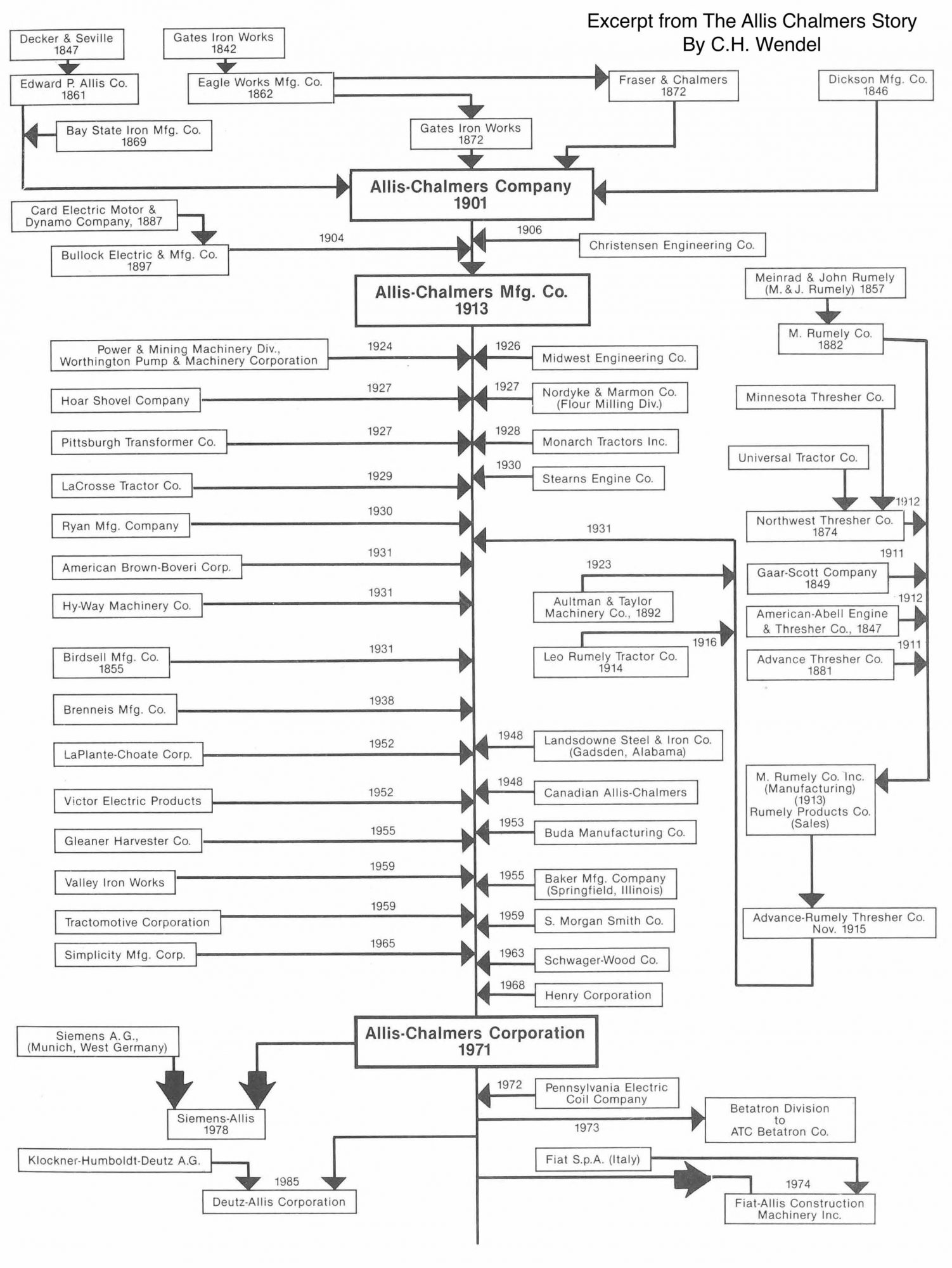Meinrad Rumely was born in Germany in 1823, and came to the United States in 1848. Two brothers, Jacob and John, had emigrated earlier.

For a time he worked with Jacob at Canton, Ohio, making wooden pumps. The other brother, John Rumely, was a pattern maker for Russell & Company at Massillon, Ohio. In 1850, Meinrad Rumely went to work for the Russell people, staying only a short time. For several months, Rumely travelled about the Midwest, finally opening a blacksmith shop at La Porte, Indiana in 1852.
Rumely learned that a railroad shop was to be located at La Porte, and decided this would be a good place for a machine shop and foundry. Railway car wheels, locomotive cylinders, and cane mills were some of the early Rumely products.
His brother John became a partner, and in 1856 they began building threshers, forming the firm of M. & J. Rumely in 1857. At the United States Fair held in Chicago in 1859, the Rumely thresher took first prize over thirteen competitors.
In 1861, stationary steam engines were added to the line, followed by portables, and finally by traction engines. Meinrad bought out his brother’s interest in 1882 and established the firm of M. Rumely Company.
The new Rumely straw burning steam engine was announced on July 22, 1886, and the revolutionary self-feeder was announced for Rumely separators on December 18, 1891.
Meinrad Rumely died on March 31, 1904 at the age of 81 years.
Production increased and new plants were built, followed by even greater production — all built on phenomenal sales.






